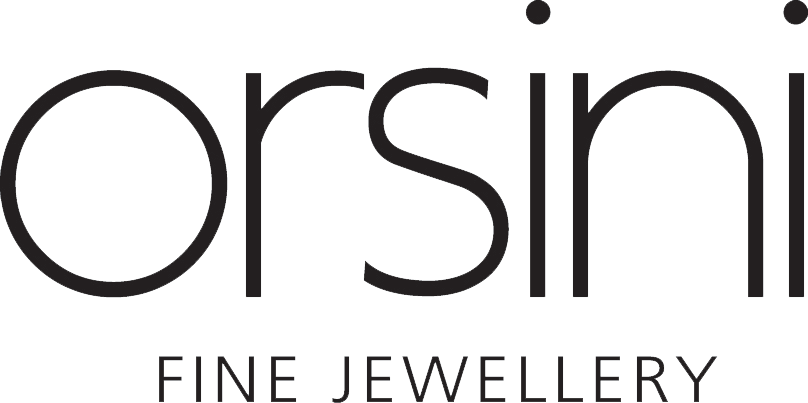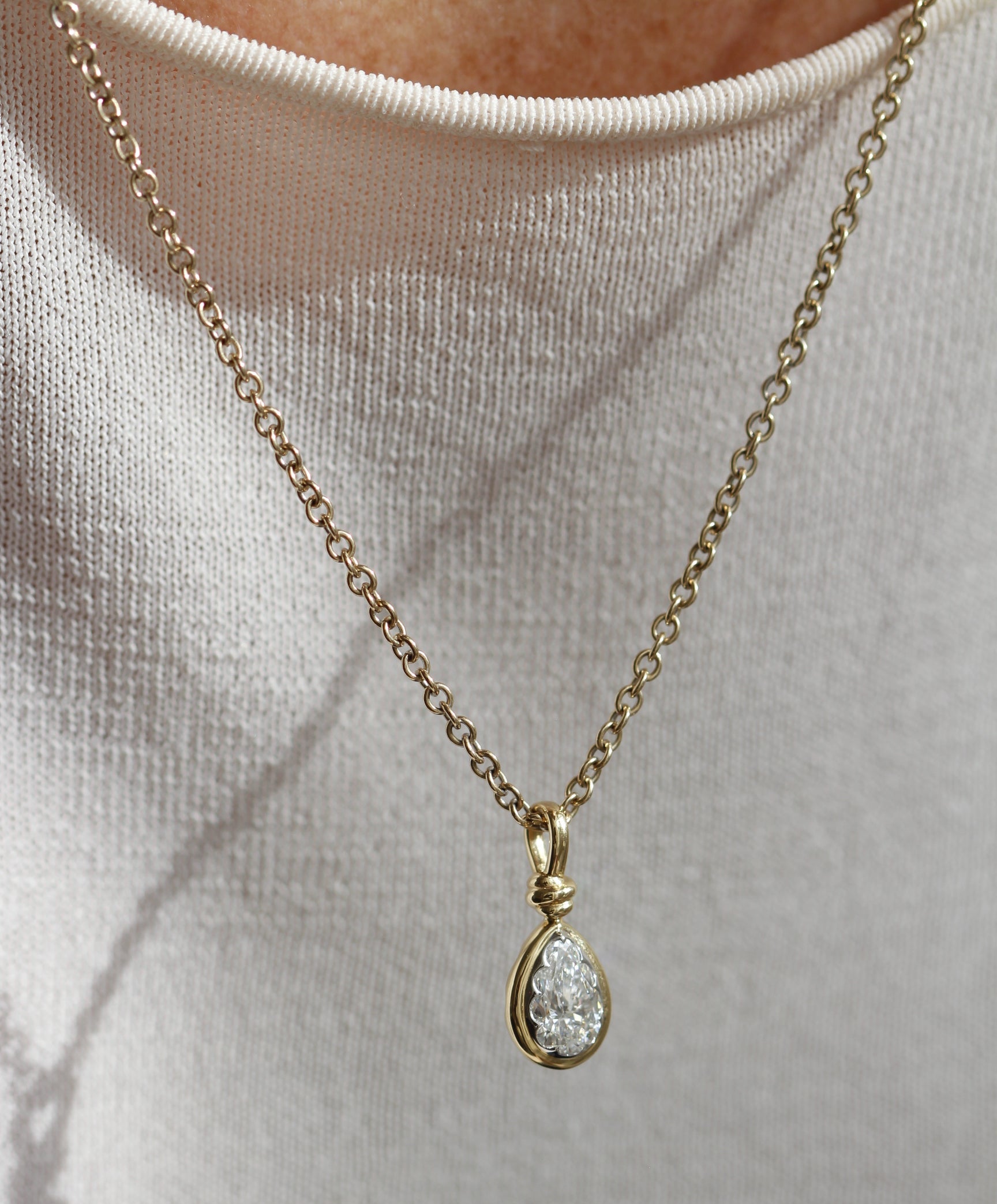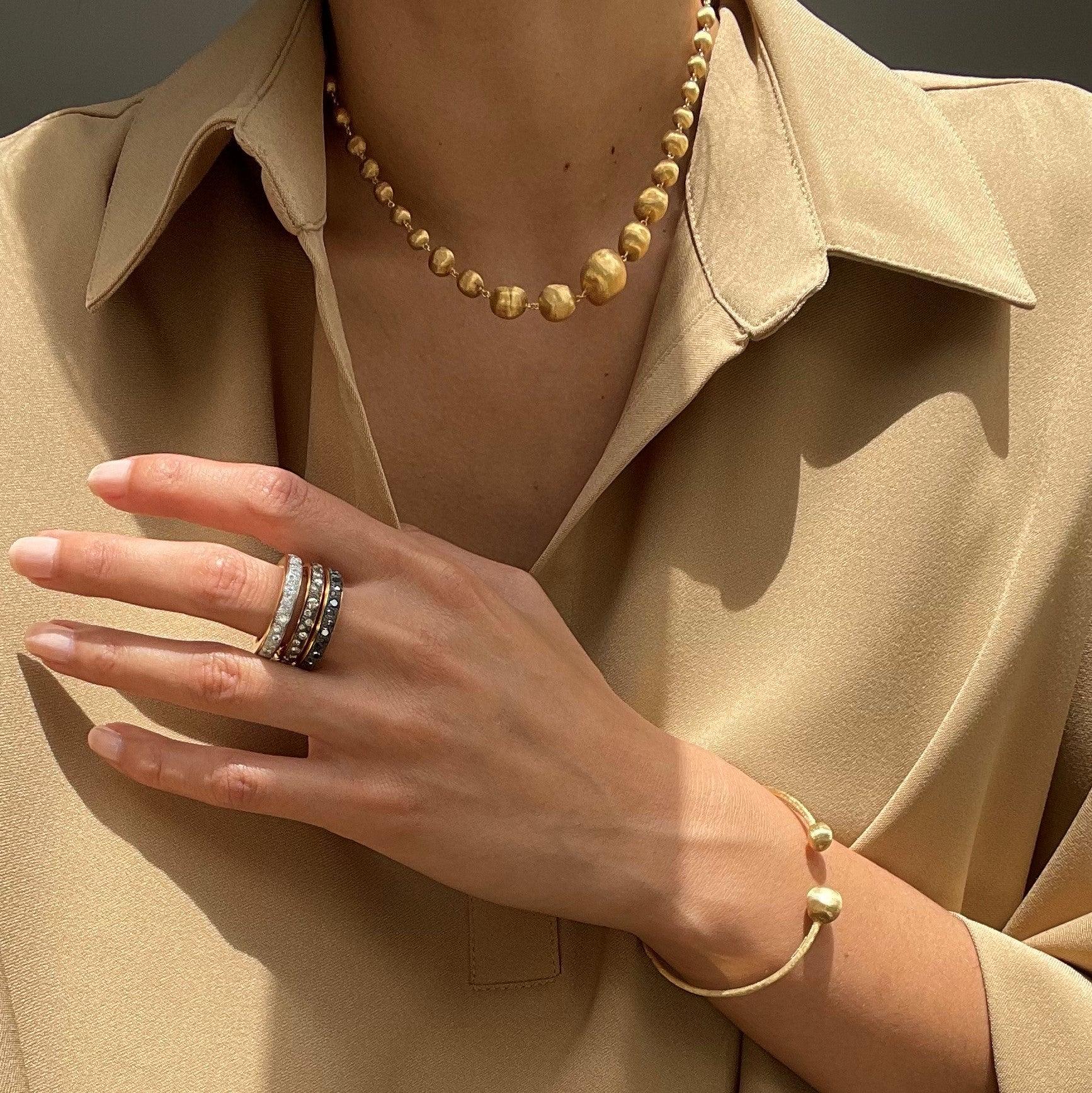
Your must-have guide to gold colours, carat weights and types
Gold has been highly sought after since the beginning of recorded history. It has become a universal symbol of wealth and love, and when crafted into a jewellery piece, can carry immense sentiment and make the wearer feel beautiful. Gold lasts forever and will not rust, tarnish or corrode. It is an everlasting and treasured precious metal that withstands the test of time.
If you are looking for the perfect piece of gold jewellery, whether it’s for yourself, a gift or an engagement ring, you may be feeling overwhelmed by terms you have never heard of. So, in this article, our expert fine jewellery team at Orsini have created a guide to gold colours and weights, and also addressed some common myths about gold.
Gold weights:
Pure and 22 carat gold
Pure gold is worshiped and highly prized by many societies. It is rich yellow in colour and is far too soft and malleable to be used in jewellery, so it is mixed or alloyed with other metals to give it strength and durability. Different gold alloys are available in a vast spectrum of colours and carats. Carat refers to the scale of purity of the gold alloy; the higher the carat, the higher the gold content. The purest gold jewellery is 22 carat weight (22 parts gold).
18 carat gold
18 carat gold is 18 parts pure gold or 75% pure, hence the stamp 750 found inside pieces made from this alloy. You may also find the letters printed 18 carat inside a ring. At Orsini Fine Jewellery we predominantly use 18 carat gold as our ‘gold standard’. 18 carat gold is strong, beautiful, durable and is less likely to tarnish, corrode or react with the owners skin. This is an ideal metal alloy for making pieces such as engagement and wedding rings that will be treasured for a lifetime.
14 carat gold
Due to its high durability and relatively low cost, 14 carat gold is a very popular choice. 14 carat gold is a mixture consisting primarily of gold, blended with durable metals such as zinc, nickel and copper along with a rhodium plating. It is an excellent option if you are wanting to keep the costs down and still have a durable long lasting ring.
9 carat gold
9 carat gold is 9 parts (37.5%) pure gold. You can tell if a piece is 9 carat gold from the 375 stamp found inside pieces made of this alloy as well as the slightly lighter, less yellow and less lustrous color tone compared to the purer gold alloys. Whilst 9 carat gold is technically 'harder' than 18 carat gold, this doesn't mean that it's more resilient in the long-term. 9 carat gold is in fact more brittle, which means it's less resistant to knocks and scratches on a microscopic scale. A 9 carat gold engagement ring will not last as well as an 18 carat gold ring which is why we always recommend an 18 carat gold ring at Orsini, especially for engagement rings and wedding bands.
Alternative gold colours:
White gold
In the 1920’s, white gold was created by mixing fine Yellow Gold with other precious white metals like Platinum, Palladium and Silver. Its popularity grew over the decades as it became known as a less expensive alternative to Platinum, with its own distinctive white hue and characteristics. The colour of White Gold can vary depending on the alloy formula used, so in order to create consistent white brightness, Rhodium Plating is applied to the surface. This plating will need to be reapplied every 1 -2 years depending on the wear and tear. White Gold can also be selected from a range of different carats, including 9ct and 18ct.
If you want a white metal that will not show wear and tear, pure platinum jewellery is a great option. Platinum is naturally white and a very hard metal. While white gold is mixed with another metal such as platinum, which is strong and durable, it does not necessarily inherit the full durability and strength of platinum. White gold is still prone to scratches, just like yellow gold.
However, platinum can take on a dull silver finish with wear. At Orsini Fine Jewellery we still love the benefits and look of rhodium plated white gold if you want a very white and shiny surface finish. One option we recommend for engagement rings is a platinum basket (the part that holds the diamond with claws) to hold the diamonds securely, and an 18k white gold band that gets rhodium plated regularly. If a ring is predominantly made with diamonds, like a pave set band, we will always recommend platinum as it will hold the diamonds in place more securely than gold.
There was a time when the price of platinum was very high, making white gold jewellery a much cheaper alternative than platinum jewellery. However, the cost of platinum has dropped and it is now less expensive than gold.
Rose gold
Pink gold (or rose gold) became popular in fashionable early European society in the nineteenth century. The pink gold alloy utilises the rich yellow of gold and the reddish hue of Copper to produce its warm pink and rose tones. Rose gold is a stronger pink hue in 9 carat carat; the higher copper content enhances the pink and rose-coloured hues. Much of the colourful Dodo collection at Orsini is made using 9 carat rose gold. Another of our brands, Al Coro, has a stunning collection of rose gold jewellery, made using 18 carat rose gold (deeper rose gold hue than the 9 carat). This is a beautiful shade of golden pink and the most popular gold colour sold by Al Coro in Northern Europe. Pomellato jewels have their own special formulation of rose gold that is a mix between rose and yellow gold.
We hope this guide has helped you form a better idea of which type and weight of gold would be right for you. Please reach out to our fine jewellery experts at Orsini if you would like to learn more, or visit our store in Parnell to view our exquisite gold jewellery collections.






